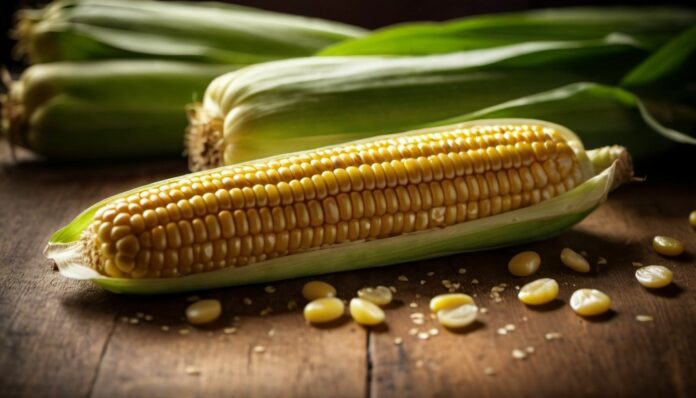Corn, also known as maize, is a versatile and widely grown cereal grain that originated in Central America. It is a staple food in many parts of the world and is used for various purposes, including as food for humans and livestock, as well as in products like corn syrup and biofuels.
Interesting Facts About Corn
- Corn is one of the oldest cultivated crops, with evidence of its cultivation dating back over 9,000 years in Mexico.
- It is the most widely grown crop in the Americas, with the United States being the largest producer.
- There are several types of corn: sweet corn, field corn, popcorn, flint corn, and dent corn.
- Corn can grow in a variety of colors, including yellow, white, red, blue, and purple.
- Sweet corn is the variety most commonly consumed as a vegetable.
- Popcorn is a type of flint corn with a hard outer shell that pops when heated.
- Field corn, or dent corn, is primarily used for animal feed, cornmeal, and industrial products.
- Corn is a key ingredient in many processed foods, including corn syrup, corn oil, and cornstarch.
- High-fructose corn syrup, derived from corn, is a common sweetener in sodas and other processed foods.
- Corn is a major source of biofuel, particularly ethanol, which is blended with gasoline.
- Each corn kernel is actually a seed that can grow into a new corn plant.
- A single ear of corn typically contains about 800 kernels arranged in 16 rows.
- Corn silk, the long threads on the ear, are part of the plant’s reproductive system and catch pollen.
- Corn plants can grow to heights of over 10 feet, depending on the variety and growing conditions.
- The United States produces about one-third of the world’s corn supply.
- Corn was a staple food for many ancient civilizations, including the Mayans and Aztecs.
- Corn has a high nutritional value, providing essential nutrients such as fiber, vitamins B and C, magnesium, and potassium.
- Corn is used to produce masa, a dough made from corn flour, which is used to make tortillas and tamales.
- Corn cobs can be used as a biofuel and are sometimes burned for energy.
- The plant is also used in the production of biodegradable plastics and other industrial materials.
- Corn husks are often used in traditional crafts and cooking, such as wrapping tamales.
- Corn pollen is heavy and relies on wind for pollination, as it cannot be carried long distances.
- The top of the corn plant is called the tassel, which produces pollen.
- Corn is used in traditional medicines in some cultures for its perceived health benefits.
- The cob, or central core of the ear of corn, is not edible but can be used for various purposes, such as animal bedding.
- Corn was introduced to Europe by Christopher Columbus in the late 15th century.
- Corn can be eaten fresh, cooked, or dried, making it a versatile food staple.
- The genetic diversity of corn is vast, with thousands of varieties adapted to different climates and uses.
- Corn plants require a lot of water to grow, making them susceptible to drought conditions.
- Genetic modification has led to the development of corn varieties that are resistant to pests and herbicides, improving crop yields.
